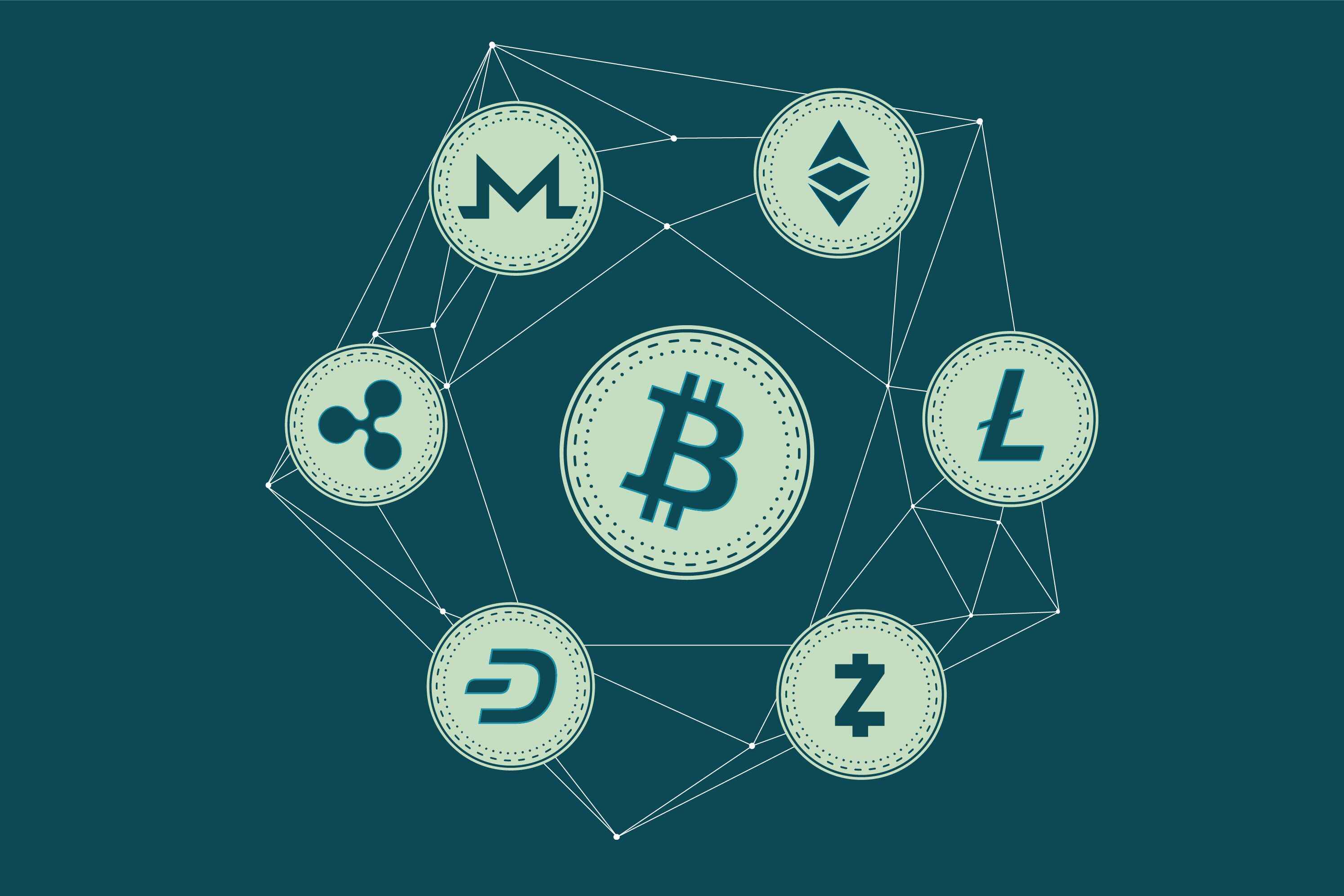Introduction
The concept of the metaverse has gained significant attention and excitement in recent years. It refers to a virtual reality space where users can interact with a computer-generated world and other users in real-time. It has the potential to revolutionize various industries, from gaming and entertainment to education and business. However, one major challenge that the metaverse faces is its expensive nature.
The metaverse requires extensive development, maintenance, and infrastructure costs. The technology behind the metaverse is constantly evolving, with the need for powerful servers, high-speed internet connections, and advanced hardware. These expenses add up quickly, making the development and operation of the metaverse a costly endeavor.
Another significant factor contributing to the high cost is the ever-increasing user experience expectations. Users demand immersive and realistic virtual environments, seamless interactions, and smooth gameplay. Achieving these expectations requires sophisticated software development, graphical assets, and continuous improvements, all of which come at a considerable expense.
Furthermore, security and privacy concerns are paramount in the metaverse. Safeguarding user data, preventing hacking and cyber-attacks, and ensuring a safe virtual environment are vital considerations. Implementing robust security measures involves significant investments in infrastructure, personnel, and ongoing monitoring.
Monetizing the metaverse is yet another challenge. While there are various monetization models, such as in-game purchases, subscriptions, and advertising, finding the right balance between generating revenue and providing a satisfactory user experience can be tricky. Developers need to carefully consider how to monetize the metaverse without alienating users or compromising the integrity of the virtual world.
Additionally, the metaverse is still in its early stages, with limited adoption and a relatively small market size. This means that revenue generation may be slow initially, making it challenging to recoup investments and generate profits. The limited user base can also hinder the growth and development of the metaverse, pushing costs even higher.
Despite these challenges, the metaverse represents a promising future of connectivity, collaboration, and immersive experiences. Overcoming its expensive nature requires innovative solutions, partnerships, and strategic planning. By addressing the development and maintenance costs, infrastructure expenses, user experience expectations, security and privacy concerns, monetization challenges, and limited adoption, the metaverse can become more accessible and affordable. With time, dedication, and investment, the metaverse can flourish into a virtual reality space that brings new opportunities and enriches the lives of users worldwide.
High Development and Maintenance Costs
One of the primary reasons why the metaverse is so expensive is the high development and maintenance costs involved. Building a virtual reality space that offers a seamless and immersive experience requires significant investment in both time and resources.
Developing the metaverse involves creating complex software, designing virtual environments, and programming intricate interactions. Skilled developers, designers, and engineers are needed to bring the metaverse to life, and their expertise comes at a cost.
Furthermore, maintaining the metaverse requires constant updates, bug fixes, and optimizations. As technology advances, new hardware and software requirements arise, necessitating ongoing maintenance and improvements. This continuous effort to keep the metaverse running smoothly adds to the overall expenses.
Moreover, integrating new features and functionalities to meet user expectations also contributes to the high costs of development. Users expect constant innovation and updates to enhance their virtual experiences, and fulfilling these demands requires allocating significant resources.
In addition, the metaverse relies on vast amounts of data processing and storage. The sheer volume of data generated by users, including their interactions, movements, and preferences, requires robust infrastructure and advanced computing capabilities. This infrastructure, including servers, data centers, and network infrastructure, comes with significant expenses.
Another aspect that adds to the development and maintenance costs is the need for extensive testing and optimization. To ensure a smooth user experience, developers must invest time and effort in rigorous testing to identify and address any issues or glitches. Additionally, optimizing performance and efficiency is an ongoing process that requires continuous monitoring and fine-tuning.
The ever-evolving nature of technology also adds to the development and maintenance expenses. As new hardware, software, and tools become available, developers may need to invest in upgrades or modifications to keep the metaverse up to date and compatible with the latest technologies.
In summary, the high development and maintenance costs of the metaverse are primarily driven by the complex nature of building and maintaining virtual reality environments, the need for skilled professionals, the continuous updates and improvements, the infrastructure requirements, and the ongoing testing and optimization efforts. By understanding these cost factors, stakeholders involved in the metaverse’s development can better allocate resources and make informed decisions that can help reduce overall costs without compromising the quality of the virtual experience.
Infrastructure and Technology Expenses
Another significant factor contributing to the high costs of the metaverse is the need for extensive infrastructure and advanced technology. Building and maintaining a virtual reality space that offers seamless interactions and immersive experiences requires robust infrastructure and cutting-edge technology.
The metaverse relies on powerful servers and data centers to handle the massive amounts of data generated by users. These servers need to be equipped with high-performance processors, large amounts of RAM, and fast storage solutions to ensure smooth gameplay and interactions. The cost of acquiring and maintaining these servers and data centers can be substantial.
In addition to the servers, high-speed internet connections are crucial for the metaverse. Users expect seamless real-time interactions and low latency, which necessitates robust network infrastructure and high-speed internet connections. The expenses associated with establishing and maintaining such infrastructure can be significant.
Furthermore, the metaverse often requires advanced hardware devices to provide users with immersive experiences. Virtual reality headsets, motion tracking systems, haptic feedback devices, and other peripherals add to the costs. These devices must be regularly updated to keep pace with technological advancements, leading to ongoing expenses.
Software development for the metaverse also incurs significant expenses. Creating sophisticated algorithms, realistic graphics, and immersive audio requires powerful software tools and technologies. The costs associated with acquiring and licensing such software can be substantial.
Moreover, the storage and processing needs of the metaverse are immense. The vast amounts of user data, virtual assets, and the complex computational requirements demand advanced storage solutions and high-performance processors. Investing in storage infrastructure and computational resources can be a major expense for metaverse developers.
The constant evolution of technology further adds to the expenses. The metaverse needs to adapt to emerging technologies and stay ahead of the curve to provide users with the latest technological advancements. This requires investments in research, development, and staying up to date with the latest trends, all of which contribute to the overall costs.
In summary, the infrastructure and technology expenses of the metaverse include the costs of acquiring and maintaining powerful servers and data centers, establishing robust network infrastructure, investing in advanced hardware devices, licensing sophisticated software tools, and ensuring sufficient storage and processing capabilities. Additionally, the need to keep pace with technological advancements adds to the expenses. By carefully managing these infrastructure and technology costs, developers can optimize their resources while delivering a high-quality virtual reality experience to users.
High User Experience Expectations
One of the factors that greatly contribute to the high costs of the metaverse is the ever-increasing user experience expectations. As technology advances, users demand more immersive, realistic, and seamless virtual environments, leading to significant investments in development and operations.
Users expect the metaverse to provide them with experiences that feel lifelike and engaging. This requires the development of sophisticated software, advanced graphics, and realistic physics engines. Creating these elements to meet user expectations can be time-consuming and expensive.
Smooth gameplay and interactions are crucial for a satisfying user experience in the metaverse. Users expect low latency, minimal lag, and seamless transitions between virtual spaces. Achieving these seamless interactions requires substantial investment in backend infrastructure and high-performance servers.
Visual fidelity is another aspect that users prioritize in the metaverse. Realistic and immersive graphics enhance the virtual experience and create a sense of presence. Developers need to invest in graphic rendering technologies, high-resolution textures, and advanced shading techniques to meet these demands.
The metaverse also requires high-quality audio to create a truly immersive environment. Users expect realistic and spatial audio that enhances the sense of presence. Incorporating high-fidelity audio technology and sound design can be costly in terms of both development and licensing.
Moreover, customization and personalization options are vital for user satisfaction in the metaverse. Users want to create unique avatars, customize their virtual spaces, and have a sense of ownership in the virtual world. Implementing these customization features and providing a wide variety of options adds complexity and cost to the development and operation of the metaverse.
Accessibility is another key consideration. The metaverse needs to cater to users with different abilities and preferences, ensuring that everyone can participate and engage in the virtual world. This requires inclusive design practices, which may involve additional development efforts and resources.
Continuous updates and improvements are also necessary to meet evolving user expectations. The metaverse is a dynamic environment, and users anticipate regular content updates, new features, and ongoing enhancements. Supporting and maintaining these updates and improvements can incur additional costs.
In summary, the high user experience expectations of the metaverse demand investments in software development, advanced graphics and audio technologies, backend infrastructure, customization features, and continuous updates. By understanding and meeting these user expectations effectively, developers can provide a compelling virtual experience while efficiently managing the costs associated with user experience enhancements.
Security and Privacy Concerns
Ensuring the security and privacy of users in the metaverse is a critical challenge, and addressing these concerns adds to the overall cost of the virtual reality space. As the metaverse becomes more interconnected and user data is collected and utilized, protecting that data and ensuring a safe virtual environment become paramount.
Cybersecurity threats, such as hacking, data breaches, and identity theft, pose significant risks in the metaverse. Developers must invest in robust security measures to protect user information and prevent unauthorized access to personal data. This includes implementing encryption techniques, firewalls, and intrusion detection systems, all of which require dedicated resources and ongoing monitoring.
Protecting user privacy is another major concern. Users expect their personal information to be treated confidentially and used only for legitimate purposes. Developing and maintaining privacy policies, complying with relevant regulations, and providing users with control over their data require careful planning and investment.
As the metaverse encourages social interactions, preventing harassment, bullying, and other forms of harmful behavior is essential. Implementing moderation tools and mechanisms to detect and address abusive behavior can be costly, as it often involves advanced algorithms, trained moderators, and a dedicated support system.
Additionally, the metaverse needs to provide users with a secure and trustworthy environment for financial transactions. Whether it’s purchasing virtual goods or engaging in in-game economies, ensuring secure payment gateways and protecting against fraudulent activities involve additional expenses.
The metaverse’s interconnected nature also makes it vulnerable to software vulnerabilities and exploits. Developers need to invest in regular security audits, vulnerability assessments, and software patches to address potential weaknesses and protect users from malicious attacks.
Furthermore, addressing legal and compliance issues is another cost factor related to security and privacy. Developers must ensure compliance with regulations related to data protection, intellectual property rights, and consumer rights. Legal consultations, audits, and ongoing compliance efforts can add to the overall expenses.
Communication and education on security practices are also crucial. Users need to be aware of potential risks, best practices for protecting their information, and how to stay safe in the metaverse. Investing in user education programs and providing robust support channels can incur additional costs.
In summary, addressing security and privacy concerns in the metaverse requires investing in robust cybersecurity measures, protecting user privacy, preventing abusive behavior, securing financial transactions, addressing software vulnerabilities, ensuring legal compliance, and educating users. By prioritizing and allocating resources to these areas, developers can create a safer and more trustworthy metaverse experience for users.
Monetization Challenges
Monetizing the metaverse presents significant challenges due to the balance required between generating revenue and providing a satisfactory user experience. There are several factors that contribute to the complexity of monetization in the virtual reality space.
One of the challenges is determining the most appropriate monetization model. There are various options available, including in-game purchases, subscriptions, advertising, and virtual real estate. Each model has its advantages and limitations, and finding the right fit for the metaverse can be a complex decision.
Creating a sustainable revenue stream while not alienating users is crucial. Users have grown accustomed to free or low-cost access to many online services, and a sudden shift to subscription-based or heavily monetized models can lead to a backlash. Striking a balance between generating revenue and maintaining user satisfaction is a delicate process.
Moreover, ensuring fair and ethical monetization practices is essential. Users should not feel exploited or coerced into spending money in the metaverse. Implementing transparent pricing, providing value in exchange for transactions, and avoiding manipulative practices are vital considerations.
The metaverse also faces challenges in terms of market size and adoption. The user base may be limited initially, affecting the potential revenue generation. As the metaverse gains popularity and more users join, the monetization landscape may evolve, but overcoming the initial hurdle can be a significant challenge.
Competition within the metaverse market is another factor that affects monetization. As more developers and platforms enter the space, users have a wider range of choices. Differentiating the metaverse offering and providing unique value propositions becomes crucial to attracting and retaining users.
Balancing the needs and expectations of diverse user segments presents another challenge. Different users have different preferences when it comes to virtual experiences and monetization models. Understanding user demographics and tailoring monetization approaches to specific segments can help increase revenue opportunities.
In summary, the monetization challenges in the metaverse include determining the most appropriate monetization model, striking a balance between revenue and user experience, ensuring fair monetization practices, addressing limited adoption and market size, navigating competition, and catering to diverse user segments. By carefully considering these challenges and exploring innovative monetization strategies, developers can unlock the potential for sustainable revenue generation without compromising the virtual experience.
Limited Adoption and Market Size
One of the significant challenges faced by the metaverse is the limited adoption and relatively small market size. While the concept of the metaverse has gained attention and excitement, it is still in its early stages of development, resulting in a restricted user base and market reach.
One reason for limited adoption is the requirement of specialized hardware and equipment to access the metaverse. Virtual reality headsets and other peripherals can be costly and may not be accessible to a wide range of users. The initial investment in these devices acts as a barrier to entry for many potential users.
Moreover, the metaverse may not yet offer enough compelling experiences to attract a broader audience. The content available in the virtual reality space may be limited or catering to specific niches, which restricts its appeal to a wider market. As more diverse and engaging experiences become available, the adoption of the metaverse is likely to increase.
Furthermore, the metaverse is still relatively unknown to a significant portion of the general population. Many people may not be familiar with the concept or have misconceptions about virtual reality. Educating the public and creating awareness about the metaverse is essential to drive adoption and expand the market size.
In addition to limited user adoption, the market for the metaverse itself is still developing. It may not yet have reached its full potential in terms of users, content creators, and businesses actively participating and contributing to the virtual reality space. As the market grows, more opportunities for monetization and revenue generation are likely to arise.
Another factor contributing to the limited adoption is the fragmentation of the metaverse market. Different platforms and virtual reality ecosystems exist, each with their own user bases and content offerings. This fragmentation can lead to a lack of interoperability and hinder the growth of a unified metaverse experience.
Overcoming the challenges of limited adoption and market size requires collaboration between industry stakeholders, continuous innovation, and the development of compelling and accessible content. As more users embrace virtual reality, the metaverse is expected to see increased adoption and a broader market reach.
In summary, the limited adoption and market size of the metaverse can be attributed to factors such as the requirement of specialized hardware, a lack of compelling experiences, limited public awareness, and market fragmentation. Overcoming these challenges requires a collective effort from developers, content creators, and stakeholders to expand the user base, create awareness, and drive innovation. By addressing these hurdles, the metaverse has the potential to become more widely adopted and reach a larger market size.
Conclusion
The metaverse holds great potential for transforming the way we interact with digital spaces and each other. However, the path to realizing this potential is paved with challenges, particularly in terms of cost and monetization. The high development and maintenance costs, infrastructure and technology expenses, user experience expectations, security and privacy concerns, limited adoption, and market size all contribute to the expensive nature of the metaverse.
To overcome these challenges, stakeholders involved in the metaverse development must carefully manage resources, make strategic decisions, and leverage innovative solutions. They need to balance the need for revenue generation with providing a satisfying user experience, ensuring robust security measures, addressing privacy concerns, and adapting to evolving technology trends.
Efforts should be made to make the metaverse more accessible and affordable, with a focus on reducing the barriers to entry such as the cost of specialized hardware and equipment. Education and awareness campaigns can help increase public understanding and acceptance of virtual reality, leading to wider adoption and market growth.
Collaboration between industry stakeholders, content creators, and technology innovators is crucial to driving the development and expansion of the metaverse. By working together, sharing knowledge and resources, and fostering interoperability, a more unified, vibrant, and sustainable metaverse can be realized.
In conclusion, although the metaverse faces significant expenses and monetization challenges, its potential to revolutionize various industries and provide unparalleled virtual experiences remains undeniable. By addressing the aforementioned challenges head-on and continuously adapting and innovating, the metaverse has the potential to become a thriving digital reality that connects people, transcends limitations, and enriches our lives in ways we have yet to imagine.

























